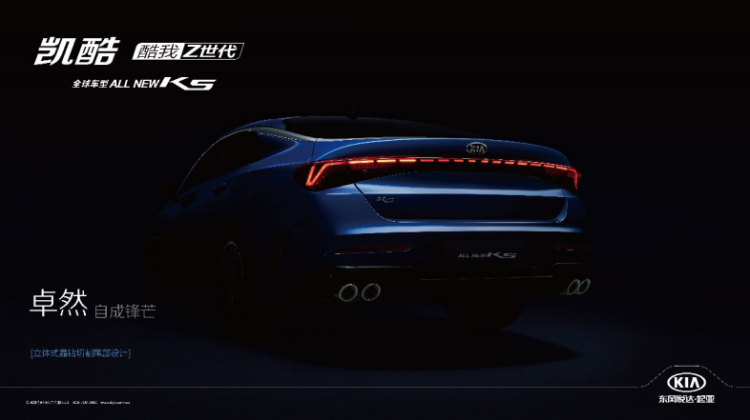Before starting this article, please pay attention to the title – “Electrification”. That’s right, I didn’t use terms such as new energy or electrification here, because in the currently visible future, simply using the two words new energy and electric to describe the changes we are about to usher in will be difficult. Some are too flimsy.

The upcoming electrification of future automotive products is a development trend covering battery packs, electric drives, energy management, intelligent human-computer interaction, autonomous driving, and technological upgrades to intelligent transportation networks. Obviously, electrification, as the future of the automobile age, will also change the current structure of the automobile industry. The first to bear the brunt is the change in the field of electric drive.
Before talking about this issue, I think, let’s take a look at what changes the arrival of the electric drive era will bring to automotive products.

Compared with the constantly changing power output curve of the internal combustion engine, the power output curve of the electric motor will always remain in a stable output range. That is to say, when we are discussing the corresponding speed of the maximum power and maximum torque of the internal combustion engine power, the electric motor can burst out its rated power and torque at any time. This also makes the motor itself have the ability to directly drive the vehicle, and then avoids a series of complicated structures such as clutches, gearboxes, transmission mechanisms and so on in traditional internal combustion engine power. This will save a lot of mechanical losses in the mechanical transmission process, and at the same time, the driving quality of the vehicle will also be greatly improved.
The key to this is the role of the electric drive system.

Under the current technical conditions, the electric drive system still revolves around the technical form of inter-axle drive, while the technical route of direct drive with hub motors is under discussion. Obviously, the direct drive of hub motors will become a technological development route in the electric drive field in the era of electrification. The technology upgrade around the direct drive of the hub motor will also be refined to the lightweight and high-efficiency hub motor assembly. After all, the era of electrification and the era of internal combustion engines are consistent in reducing the unsprung mass.
It can also be seen from here that whether it is the electric drive between the bridges or the direct drive of the hub motor, the key to the technical development of the electric drive field is the direction of integrating the electric motor, the electric drive main reducer and the inverter. in progress. The advantages brought by the integrated electric drive system are very significant. First, by integrating the electric motor and the main reduction mechanism of the electric motor, the space requirements of the mechanical parts for the cabin will be greatly reduced, and the limited outline can be achieved. Under the size, the internal space is maximized. Secondly, the integrated structure will also greatly reduce the center of gravity of the vehicle, and then obtain a better handling stability and driving texture.

It is precisely because of this that all our ideas about future cars are based on the fact that the electric drive system will completely release the cabin size of traditional cars without exception. Under the existing overall structure of new energy vehicles, the inter-axle motor is still the mainstream direction of development at present. Therefore, how to integrate the three major components of the inter-axle electric drive system has become an important issue for automobile electric drive under the current technical conditions. key to system development.
Therefore, the question arises, under the existing industrial structure, who should lead the integration of the motor and transmission system of the electric drive system? In this regard, Dana’s solution is a good example.
As a hundred-year-old in the field of transmission, Dana has produced countless classic main reducers, drive axles, drive shafts and other transmission products in the past more than a century. In the field of mechanical transmission has accumulated a lot of experience. The accumulation of these products based on mechanical principles can be connected with new energy vehicles in the electrification era. In other words, at the level of electric drive, there is not much difference between electric vehicles and internal combustion locomotives. This is Dana’s advantage.

Under such industrial advantages, Dana took the lead in completing the structural design of the electric gearbox of the electric drive axle. The solution of the system, the electric drive gearbox is used as the external interface of the whole assembly to realize the mechanical connection with the vehicle.
In terms of this technology, through the acquisition of TM4, a subsidiary of Quebec Hydro, Dana has obtained TM4’s technology in the field of electric motors, generators, power electronic equipment and control systems in the transportation market, and has acquired TM4’s technology in permanent magnet motors. The core technology of , thermal management system, coil winding, motor and inverter control algorithm is integrated with the electric drive axle. In this way, a complete set of electric drive solutions has been formally formed. And Dana has become the only supplier in the world that can provide a complete set of electric motor drive solutions for vehicle manufacturers in the terminal market. Standing at the forefront of the era of electrification, it has also taken the lead in realizing the integration of the industrial chain in the era of electrification.

Obviously, the era of electrification in the future will be an era of great turning point. When electrification arrives, the real gameplay and real players will officially surface. From this point of view, Dana is a bit of a player.




